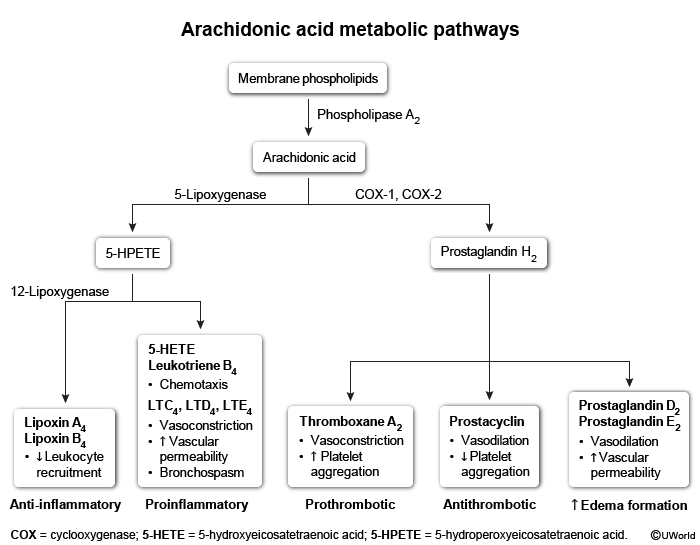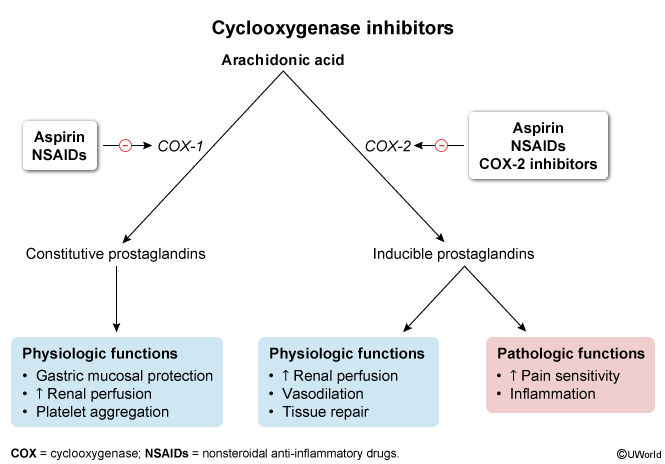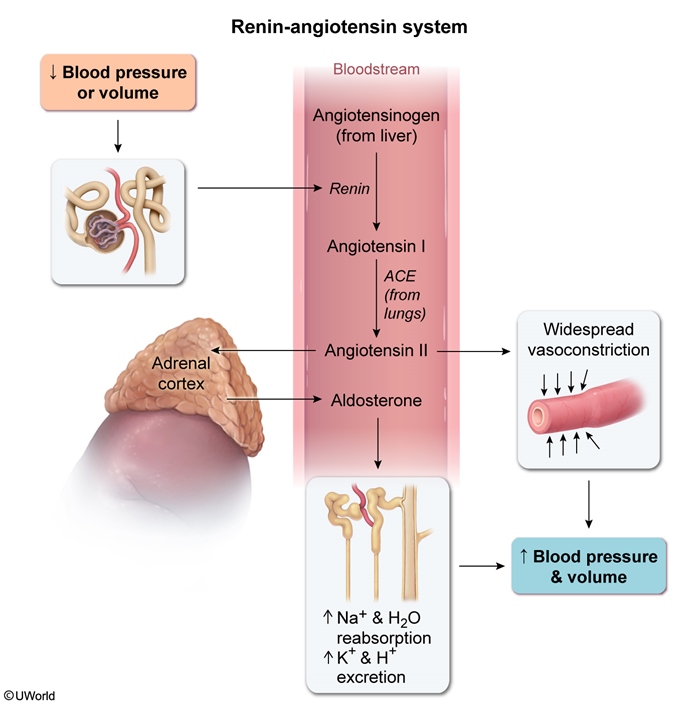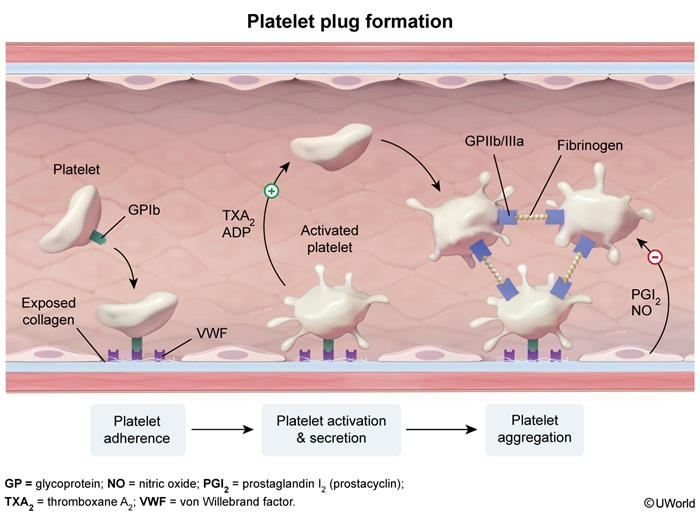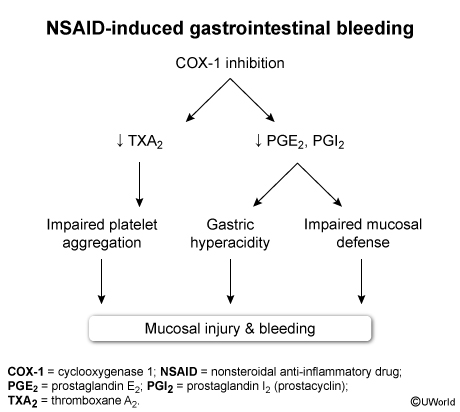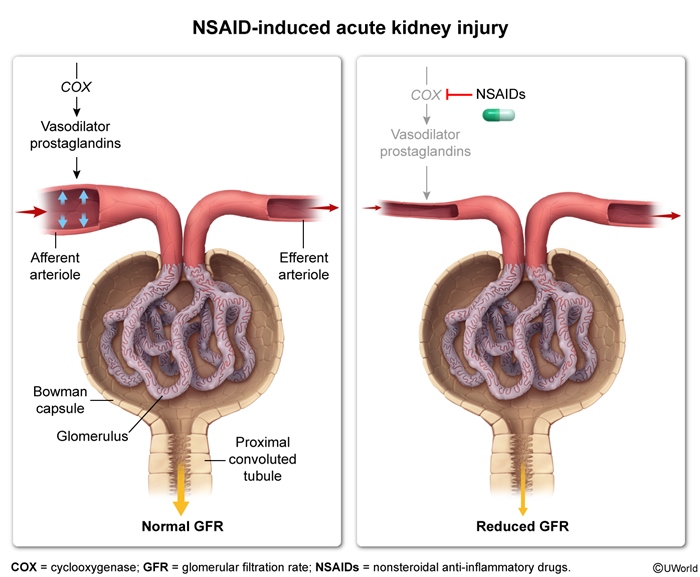COX-1 And COX-2 Inhibitors
Article Sections
Introduction
Cyclooxygenase (COX) enzymes catalyze the rate-limiting step in the conversion of arachidonic acid to prostanoids (eg, prostaglandins, prostacyclin, thromboxane A2) (Figure 1). Prostanoids are involved in a wide range of physiologic (and potentially pathologic) responses (eg, gastric mucosal protection, smooth muscle contraction/dilation, platelet aggregation, inflammation), acting locally within the tissue in which they are produced. COX enzymes exist in 2 isoforms with different roles: COX-1 and COX-2 (Figure 2).
COX-1COX-1 is constitutively expressed in most tissues and is involved primarily in maintaining normal physiologic functions, including:
- Gastrointestinal (GI) effects: In the GI tract, COX-1 synthesizes prostaglandins that protect GI mucosa by limiting gastric acid production, increasing mucosal blood flow, and increasing bicarbonate production.
- Renal effects
Continue Learning with UWorld
Get the full COX-1 And COX-2 Inhibitors article plus rich visuals, real-world cases, and in-depth insights from medical experts, all available through the UWorld Medical Library.
Figures
